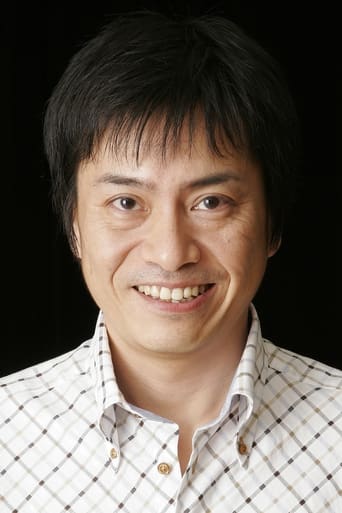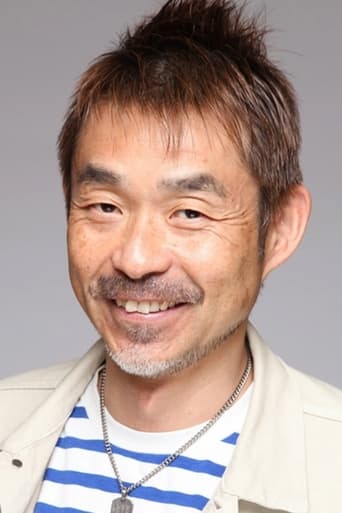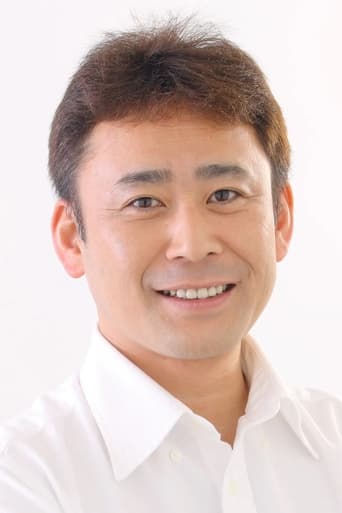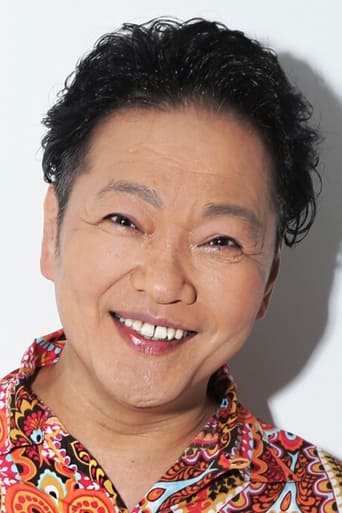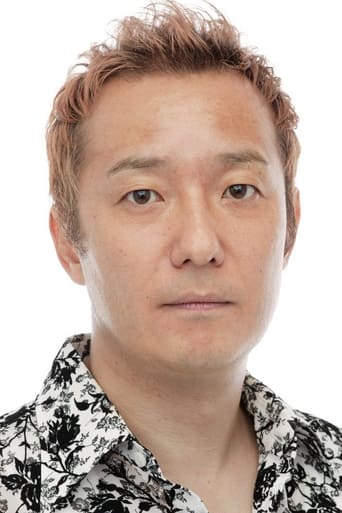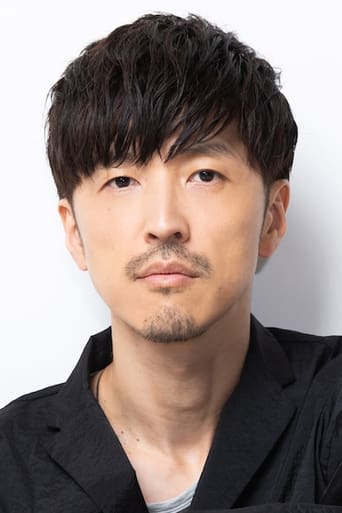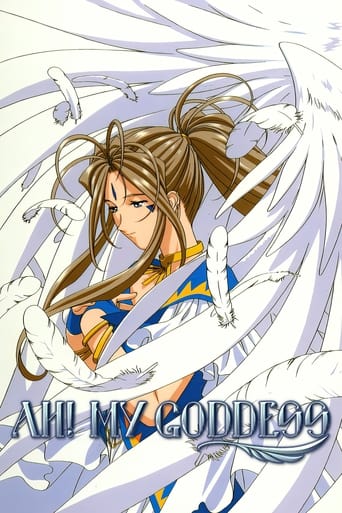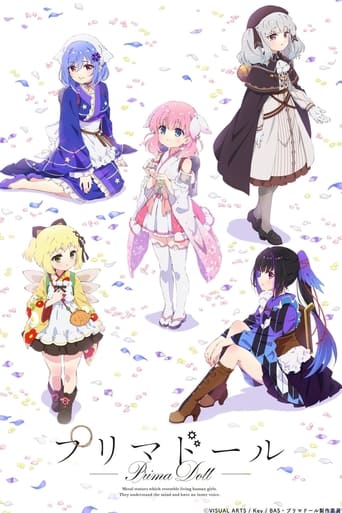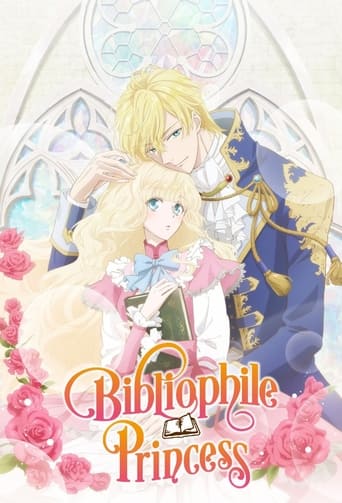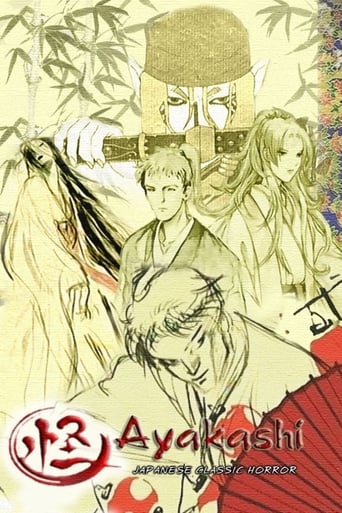
The Legend of Tenshu - Part 3
"Goddess of the Dark Tower" is based on Tenshu Monogatari, a play by Kyōka Izumi. It tells the story of a forbidden love between a god and a human. In medieval Japan, Zushonosuke Himekawa is a falconer who is sent by his master Lord Harima to retrieve a precious falcon named Kojiro. Zushonosuke's search is initially fruitless, though it leads him to a chance encounter with a beautiful woman bathing in a lake. Zushonosuke falls in love with her at first sight. When news reach Lord Harima that the falcon has in fact fled to the castle keep of Shirasagi-jo, Zushonosuke is ordered to go there to bring the falcon back. Accompanied by two friendly demons, Zushonosuke makes his way to Shirasagi-jo, which is rumored to be inhabited by beings called Wasuregami (Forgotten Gods). At the castle, Zushonosuke is surprised to find the same beautiful woman he encountered before, who introduces herself as Tomihime (Princess Tomi), beginning their forbidden romance.
- Michiko Yokote
- Chiaki J. Konaka
- Yuuji Sakamoto
Country: JP
Language: Ja
Runtime: 23
Season 1:
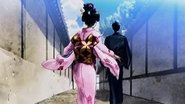
"Yotsuya Ghost Story" is a retelling of the classic Japanese ghost story, written by the 18th century kabuki playwright Nanboku Tsuruya IV. In the anime, Nanboku himself becomes the narrator. Iemon Tamiya is a ronin samurai who marries a beautiful woman named Oiwa. Oiwa is happy with her married life and the birth of their child, but Iemon feels the burden of their poverty. In return for the promise of a job by a rich man, Iemon promises to marry the man's daughter and conspires to murder his own wife. A servant is ordered by the rich man's daughter to poison Oiwa's food; the toxin permanently disfigures Oiwa's face. Iemon then orders his servant to kill her after having his way with her. Oiwa commits suicide after coming to know of Iemon's treachery. Another of Iemon's servants is also killed and, along with the dead Oiwa, is nailed to a piece of wooden board and tossed into the river. After Oiwa's death, Iemon marries the rich man's daughter, as promised.

"Yotsuya Ghost Story" is a retelling of the classic Japanese ghost story, written by the 18th century kabuki playwright Nanboku Tsuruya IV. In the anime, Nanboku himself becomes the narrator. Iemon Tamiya is a ronin samurai who marries a beautiful woman named Oiwa. Oiwa is happy with her married life and the birth of their child, but Iemon feels the burden of their poverty. In return for the promise of a job by a rich man, Iemon promises to marry the man's daughter and conspires to murder his own wife. A servant is ordered by the rich man's daughter to poison Oiwa's food; the toxin permanently disfigures Oiwa's face. Iemon then orders his servant to kill her after having his way with her. Oiwa commits suicide after coming to know of Iemon's treachery. Another of Iemon's servants is also killed and, along with the dead Oiwa, is nailed to a piece of wooden board and tossed into the river. After Oiwa's death, Iemon marries the rich man's daughter, as promised.
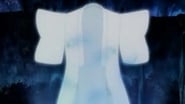
"Yotsuya Ghost Story" is a retelling of the classic Japanese ghost story, written by the 18th century kabuki playwright Nanboku Tsuruya IV. In the anime, Nanboku himself becomes the narrator. Iemon Tamiya is a ronin samurai who marries a beautiful woman named Oiwa. Oiwa is happy with her married life and the birth of their child, but Iemon feels the burden of their poverty. In return for the promise of a job by a rich man, Iemon promises to marry the man's daughter and conspires to murder his own wife. A servant is ordered by the rich man's daughter to poison Oiwa's food; the toxin permanently disfigures Oiwa's face. Iemon then orders his servant to kill her after having his way with her. Oiwa commits suicide after coming to know of Iemon's treachery. Another of Iemon's servants is also killed and, along with the dead Oiwa, is nailed to a piece of wooden board and tossed into the river. After Oiwa's death, Iemon marries the rich man's daughter, as promised.

"Yotsuya Ghost Story" is a retelling of the classic Japanese ghost story, written by the 18th century kabuki playwright Nanboku Tsuruya IV. In the anime, Nanboku himself becomes the narrator. Iemon Tamiya is a ronin samurai who marries a beautiful woman named Oiwa. Oiwa is happy with her married life and the birth of their child, but Iemon feels the burden of their poverty. In return for the promise of a job by a rich man, Iemon promises to marry the man's daughter and conspires to murder his own wife. A servant is ordered by the rich man's daughter to poison Oiwa's food; the toxin permanently disfigures Oiwa's face. Iemon then orders his servant to kill her after having his way with her. Oiwa commits suicide after coming to know of Iemon's treachery. Another of Iemon's servants is also killed and, along with the dead Oiwa, is nailed to a piece of wooden board and tossed into the river. After Oiwa's death, Iemon marries the rich man's daughter, as promised.
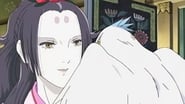
"Goddess of the Dark Tower" is based on Tenshu Monogatari, a play by Kyōka Izumi. It tells the story of a forbidden love between a god and a human. In medieval Japan, Zushonosuke Himekawa is a falconer who is sent by his master Lord Harima to retrieve a precious falcon named Kojiro. Zushonosuke's search is initially fruitless, though it leads him to a chance encounter with a beautiful woman bathing in a lake. Zushonosuke falls in love with her at first sight. When news reach Lord Harima that the falcon has in fact fled to the castle keep of Shirasagi-jo, Zushonosuke is ordered to go there to bring the falcon back. Accompanied by two friendly demons, Zushonosuke makes his way to Shirasagi-jo, which is rumored to be inhabited by beings called Wasuregami (Forgotten Gods). At the castle, Zushonosuke is surprised to find the same beautiful woman he encountered before, who introduces herself as Tomihime (Princess Tomi), beginning their forbidden romance.

"Goddess of the Dark Tower" is based on Tenshu Monogatari, a play by Kyōka Izumi. It tells the story of a forbidden love between a god and a human. In medieval Japan, Zushonosuke Himekawa is a falconer who is sent by his master Lord Harima to retrieve a precious falcon named Kojiro. Zushonosuke's search is initially fruitless, though it leads him to a chance encounter with a beautiful woman bathing in a lake. Zushonosuke falls in love with her at first sight. When news reach Lord Harima that the falcon has in fact fled to the castle keep of Shirasagi-jo, Zushonosuke is ordered to go there to bring the falcon back. Accompanied by two friendly demons, Zushonosuke makes his way to Shirasagi-jo, which is rumored to be inhabited by beings called Wasuregami (Forgotten Gods). At the castle, Zushonosuke is surprised to find the same beautiful woman he encountered before, who introduces herself as Tomihime (Princess Tomi), beginning their forbidden romance.

"Goddess of the Dark Tower" is based on Tenshu Monogatari, a play by Kyōka Izumi. It tells the story of a forbidden love between a god and a human. In medieval Japan, Zushonosuke Himekawa is a falconer who is sent by his master Lord Harima to retrieve a precious falcon named Kojiro. Zushonosuke's search is initially fruitless, though it leads him to a chance encounter with a beautiful woman bathing in a lake. Zushonosuke falls in love with her at first sight. When news reach Lord Harima that the falcon has in fact fled to the castle keep of Shirasagi-jo, Zushonosuke is ordered to go there to bring the falcon back. Accompanied by two friendly demons, Zushonosuke makes his way to Shirasagi-jo, which is rumored to be inhabited by beings called Wasuregami (Forgotten Gods). At the castle, Zushonosuke is surprised to find the same beautiful woman he encountered before, who introduces herself as Tomihime (Princess Tomi), beginning their forbidden romance.
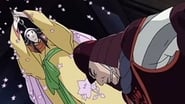
"Goddess of the Dark Tower" is based on Tenshu Monogatari, a play by Kyōka Izumi. It tells the story of a forbidden love between a god and a human. In medieval Japan, Zushonosuke Himekawa is a falconer who is sent by his master Lord Harima to retrieve a precious falcon named Kojiro. Zushonosuke's search is initially fruitless, though it leads him to a chance encounter with a beautiful woman bathing in a lake. Zushonosuke falls in love with her at first sight. When news reach Lord Harima that the falcon has in fact fled to the castle keep of Shirasagi-jo, Zushonosuke is ordered to go there to bring the falcon back. Accompanied by two friendly demons, Zushonosuke makes his way to Shirasagi-jo, which is rumored to be inhabited by beings called Wasuregami (Forgotten Gods). At the castle, Zushonosuke is surprised to find the same beautiful woman he encountered before, who introduces herself as Tomihime (Princess Tomi), beginning their forbidden romance.
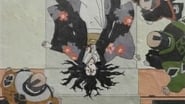
In the Edo period, the young daughter of a samurai family is planning to marry, but not for love. Her father, while being a good man, is financially incompetent and too madly in love with her mother to refuse her anything, drowning the family in debt. To save themselves from disgrace and the poor-house, her parents and the head of family decide to sell her marriage to clear these debts. While waiting for the agreed upon time to leave for her new husband's home, a strange, nameless medicine peddler arrives and enters the house, its entrance left unguarded in the rush to prepare for the wedding. Heading immediately to the servant's quarters he meets Kayo, a young servant girl, who explains the situation after he shows her some "marriage aid" charms. Her bravery and good sense continue to aid him throughout the storyline.

The moment the bride crosses the threshold of the house to leave, she is struck dead. The medicine peddler, being a stranger and looking rather suspicious, is seized as the culprit and bound. After an older retainer is killed while attempting to fetch a doctor, the medicine peddler breaks his bounds, reveals himself to also be a demon-hunter, and claims the true villain is a bakeneko. The medicine peddler sets up a barrier to keep the demon at bay and begins questioning the family and their retainers to learn the shape (katachi), truth (makoto) and reasoning (kotowari) of the demon so that it can be exorcised. At first the family prevaricates, but as the demon grows stronger, breaking through the barriers of the medicine peddler and killing their members, they begin to talk, alluding to the family's dark past. As the demon breaks through his final barrier, the medicine peddler attempts to unsheathe his sword and destroy it, but fails and is shown a vision by the demon itself.
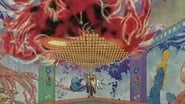
In his youth, the head of family had kidnapped a sacrificial maiden, keeping her locked away in a basement prison to be raped and abused at his leisure. Her only companionship was a young cat which she secretly raised with the food she was given, hoping it would one day escape where she could not. One day the head of family's elder son was caught raping her, after which the head beat her to the point of death as punishment. The cat attacked him to protect her, then escaped as she died; its regret from being unable to protect her combined with her sorrow, eventually turning it into a demon. Having finally realized the shape, truth, and reasoning of the demon, the medicine peddler unsheathes his sword, which in reality releases his true spirit-nature from the human shell it is bound within, allowing him to exorcise the bakeneko's grief and release it from its vengeance. In the end, only the two blameless retainers, Kayo and a young samurai, are left to be saved.

